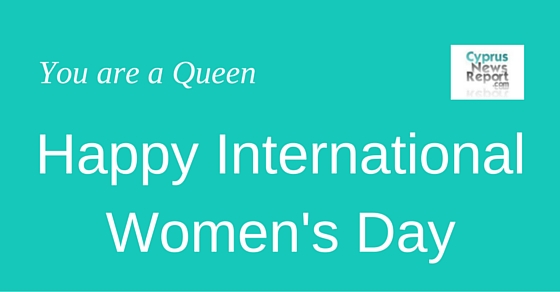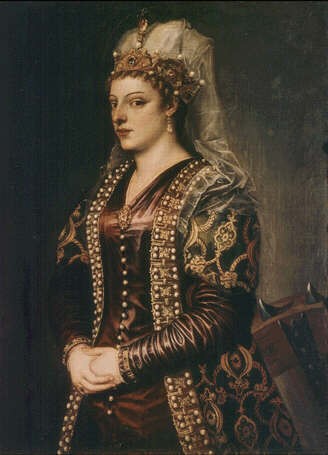
Women’s Day - Leading Cypriot Women in History
In 1960, Cypriot women were given the right to vote and stand for election, but so far few of them have chosen to go into politics or follow a high-powered career. This in spite of high levels of education and talent, so just what is stopping them other than the relatively late arrival of their right to suffrage?
It’s mainly the fact that they are the main caretaker in the family, according to research.
While being an excellent choice to take care of the family, women do suffer financially for it, experiencing a 16 percent hourly wage pay gap with men, and lower pensions. It is extremely hard work to take care of the children and the elderly, and it’s also unpaid, even though it’s qualitatively rewarded with healthy, well-adjusted family members.
Cyprus’ history has a number of notable women leaders, so on the occasion of International Women’s Day on March 8th, we’re highlighting three amazing women who ruled the country, while looking forward to the day when another worthy woman is once again in the leadership position.
Queen Catherine Cornaro (1454-1510)

Catherine Cornaro painted by Titian.
Catherine Cornaro ruled Cyprus for 15 years as part of the Venetian Empire, after she married James II at the age of 14 and inherited the throne when her son died of malaria in 1473.
She was squeezed out of her royal position by Venetian merchants who wanted to control the island, and in 1489 she was forced to return to Italy.
Historians believe she was a popular leader and when she left the island, both she and the Cypriots had tears running down their faces.
The historian George Boustronios wrote a chronicle of her life and times.
“On 14 February (1489), the Queen dressed in black and accompanied by the Barons and their ladies, set off on horseback. Six knights held her horse’s reins. From the moment she left Nicosia, her eyes kept streaming with tears. Upon her departure, the whole population was bewailing.”
Queen Charlotte of Cyprus (1444-1487)
Charlotte preceded James II and Catherine Cornaro as Queen and ruled for six years.
Crowned in 1458, Charlotte’s reign was overshadowed by a running war with her illegitimate half-brother James II, who besieged her and her husband in Kyrenia Castle for three years, forcing her to run away to Rome.
She was born in Nicosia as the daughter of King John and Helena Palaiologina and was well educated, speaking several languages including Greek and French.
Pope Pius II, described Charlotte as “a woman of about twenty-four, of middle height: bright eyes, complexion betwixt dark and pale; speech smooth and flowing torrent like after the manner of the Greeks; French costume; manners becoming her royal blood.”
Queen Consort Helena Palaiologina (1428-1458)
Charlotte’s mother Helena was a formidable Greek woman who revived the Greek influence in Cyprus and was famously jealous of her husband John’s mistress, Marietta de Patras.
She even ordered her rival’s nose to be cut off, seeing her as a threat to her own children’s right to the throne because Marietta had an illegitimate son, James.
James and Helena became bitter enemies, and later, James deposed his half-sister Charlotte to gain the throne and marry Catherine.
Helena was popular in Cyprus because she financially supported the Greek Orthodox Church and took in many Byzantine refugees after the Ottomans attacked Constantinople in 1453.
She was described as a strong character, even stronger than her husband King John.
About Sarah Fenwick
Editor, journalist, jazz singer and digital marketing consultant.
Bookmark worthy
- Non Gamstop Casino
- Casino Not On Gamstop
- Non Gamstop Casinos
- Casino Italiani Non Aams
- Slot Sites Not On Gamstop
- Best Non Gamstop Casinos UK 2025
- Crypto Casino
- Online Casinos UK
- Betting Sites Not On Gamstop UK
- UK Casino Not On Gamstop
- Best Non Gamstop Casinos
- Sites Not On Gamstop
- Online Betting Sites Not On Gamstop
- Non Gamstop Casino
- UK Casinos Not On Gamstop
- Non Gamstop Casino
- Casino Sites Not On Gamstop
- Casino Non Aams
- Casinos Sin Licencia España
- Casino Sites UK
- Slots Not On Gamstop
- Best Slot Sites For Winning UK
- Casino En Ligne
- Slots Not On Gamstop
- Non Gamstop Casino Sites UK
- Casino Non Aams
- Non Gamstop Casinos
- Meilleur Casino En Ligne France
- Nouveau Casino En Ligne Belgie
- Nouveau Casino En Ligne Francais


Leave a reply
You must be logged in to post a comment.